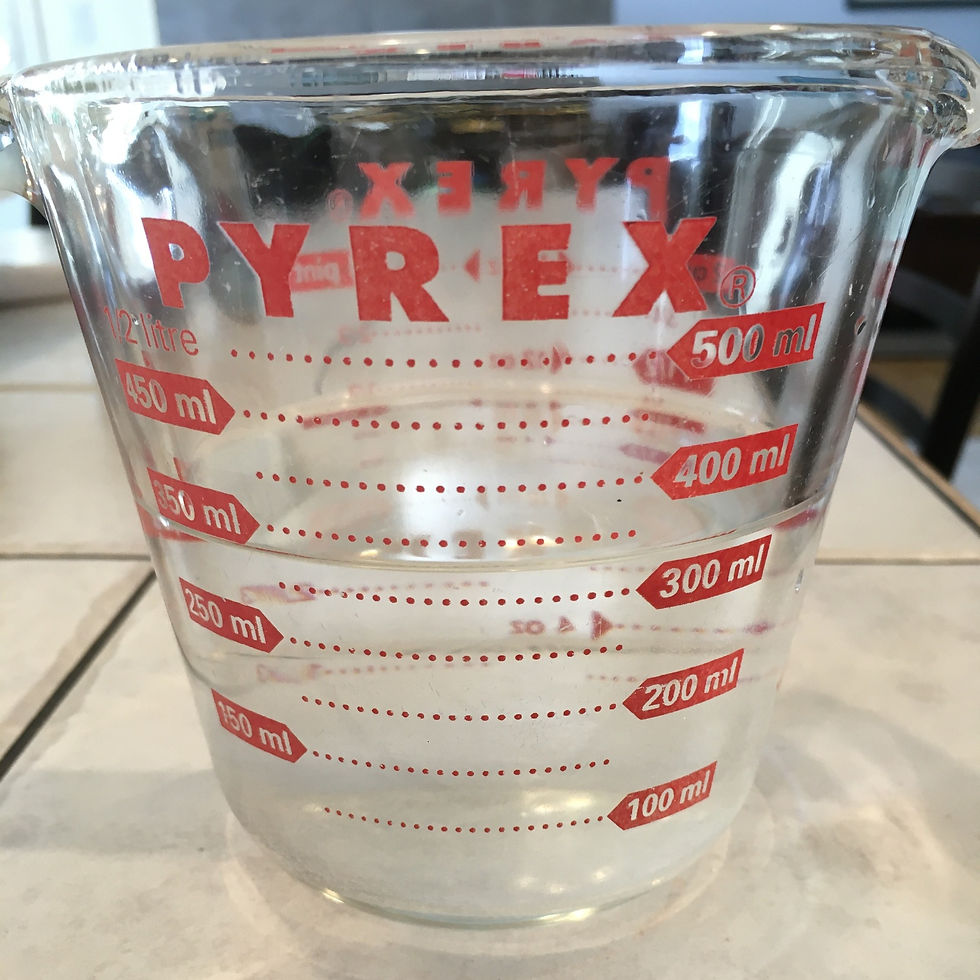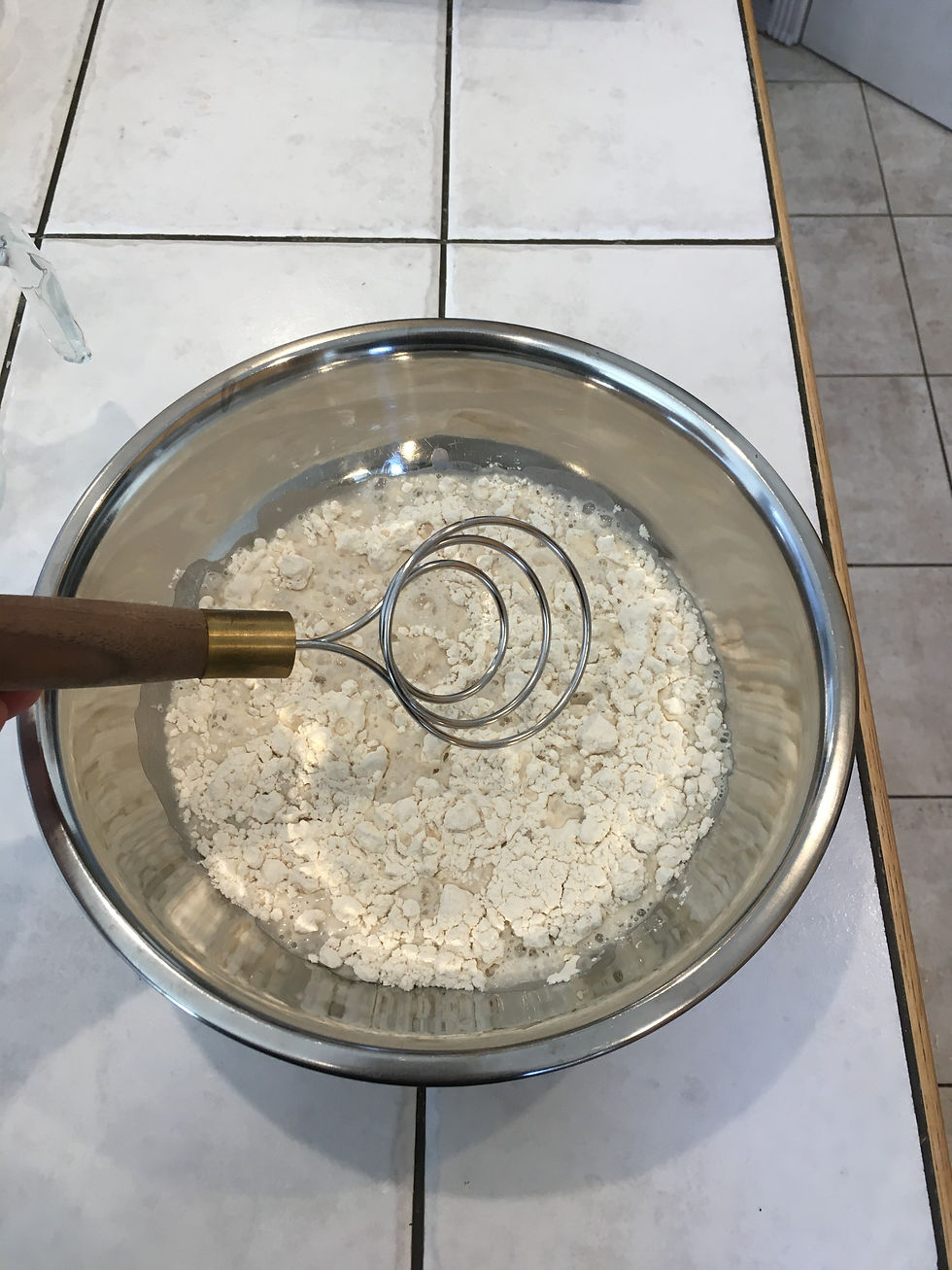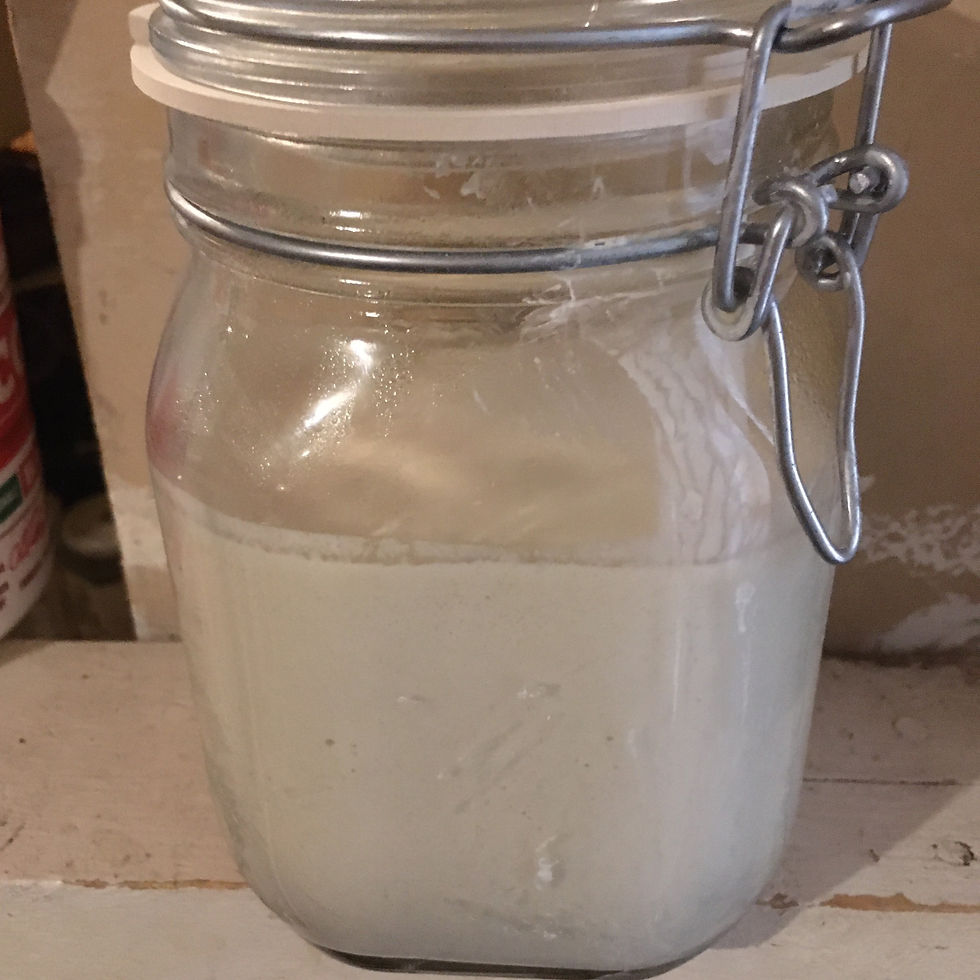As I write this, it is April of 2020 and the world is in the midst of the COVID-19 pandemic. Physical distancing and self isolation are the new normal being practiced worldwide and in some countries, thankfully not Canada, they are in total lock down. Basic staples are sometimes difficult, if not impossible, to find. Don't get me started on toilet paper. What this means is that dry yeast is now a rare commodity. But is yeast really that rare? The answer is not at all. Wild yeast lives in the air all around us. We just have to capture it for later use. I'm going to share with you my favourite sourdough starter recipe, sometimes referred to as the mother.
Let's look at our Sourdough Starter ingredients.
DAY ONE
Water 200 g
Strong Wheat Flour 200 g
Grated Apple 100 g
DAY FOUR
Water 200 g
Strong Wheat Flour 200 g
This recipe is so easy it practically makes itself. Our ingredients are wheat flour, water (no more than 35 *C or 95 *F) and grated apple. I prefer to use a tart green apple like a Granny Smith as it tends to bring out that unmistakable sourdough tang. For flour I use Bread Flour or the Strong Bakers Flour. You can use whatever flour you wish but remain consistent in adding the same type of flour you started with when it comes time to "feed you mother".
Why do we work by weight rather than volume? For two reasons. First, all of the dry ingredients we use making bread have different densities. By using a single weight for measurement (like the gram) we get more consistency and better knowledge of the

ratios of our ingredients as a whole. This will be important when we discuss "bread math" a little later. Second, your kitchen tools used to measure volume are inherently inaccurate. By way of example, this is a photo of a standard, mass produced, Pyrex measuring cup. The San Francisco Sourdough Bread recipe we will make in a few days calls for 300 grams of water. The metric systems has its roots beginning with a single gram of water. A gram of water has a liquid measurement of one millilitre and a volume of one cubic centimetre. Therefore, 300 g of water should equal exactly 300 ml by volume. As you can see, the water in this measuring cup is closer to the 350 ml mark than the 300. This is why weighing your ingredients is the preferred choice.

Back to our starter. Mix the flour with the water and apple in a stainless steel bowl until it is a thick pasty batter. Many recipes tell you to use a whisk. If you do this you will find that your dough will gather inside the whisk such that you will need to separate the wires to get it all out. What a pain! I learned early that there is a better tool for the job. Most bakery supply stores will carry this wonderful tool on the left that you will use to mix all of your starters with ease and much less mess. I purchased mine at William Sonoma a few years back.

Once you are done, pour the mixture into a 2 L glass jar with a lid and leave it in a warm place for the next three days. Give it a stir with a wooden spoon a couple of time a day. This will help activate the necessary enzymes as well as allow fresh air in and with it, that wild yeast that we discussed above. The mixture should start to "foam" within a day or so. On day four pour your mixture into a stainless steel bowl. Add another 200 grams of flour and 200 grams of warm water. stir it gently until it has a consistent texture. Cover lightly with cling wrap and leave for another 24 hours. You have now created your "mother" and are ready to make bread! For now we are just going to put it back into our 2 L glass jar and store it in the fridge until needed.
Using and Feeding Your Starter
When using your sourdough, take the amount you need from the mother the night before. It will need to be room temperature to work with.
When your mother has reduced to about 400 g you need to feed it. Continuing to feed your starter ensures it to have a very long life. There are starters out there that are hundreds of years old.
Keep it out of the fridge overnight. It is helpful to know the weight of your container so you can easily determine the weight of your mother. The next morning, transfer the room temperature starter into a stainless steel bowl. In a separate bowl mix the exact weight of the starter with 50% flour and 50% water until the flour is saturated and pastey. For example, if you have 400 g of starter you would mix 200 g of flour and 200 g of water. Slowly stir the new "food" into the mother until you create a smooth batter. Cover with a towel and let sit for 24 hours. Put it back in your storage jar and return to the fridge.
The more you repeat this cycle the better tasting your sourdough becomes. The flavour and aroma develops over time.
Sourdough Rye
If you want to make a wide variety of sourdough breads you may also want a rye flour starter. Just follow the same recipe and substitute light rye flour for the wheat flour. You may find that the rye flour is more absorbent and therefore will need a little extra water to achieve the same consistency as the wheat flour.

Commenti